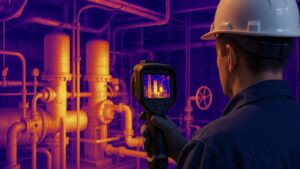As more boats and ships switch to electric propulsion, there is a growing need for convenient, high-powered electric charging solutions at ports, marinas, and harbors globally. However, unlike electric cars which can use standardized connectors, there is currently a lack of consistency. This is the case when it comes to electric charging voltages and connectors for marine vessels.
This can lead to issues with compatibility, safety, and inefficient charging. So, work needs to be done to standardize electric charging for marine applications. This is through common plugs, charging speeds, and safety protocols. Furthermore, standardization will make installing and using electric charging infrastructure for boats significantly easier. So, this article will provide a comprehensive overview of the current status of electric charging connectors used in the marine industry and what needs to be done to standardize this crucial infrastructure.
The Growing Demand for Shore Power as Vessels Electrify
Traditionally, ships and boats have relied heavily on legacy diesel engines and generators for propulsion and auxiliary power. However, diesel exhaust contains high levels of pollutants. It includes nitrogen oxides, particulate matter, and greenhouse gases. Moreover, maritime transport currently contributes nearly 3% of global carbon emissions.
To combat emissions, regulations like the IMO’s Energy Efficiency Design Index (EEDI) mandate increasing efficiency and lower emissions from ships. Furthermore, many operators are turning to batteries, fuel cells, and electric drivetrains. It helps to comply with these regulations and respond to public pressure to decarbonize. Additionally, ports in turn have to provide the charging solutions these vessels will rely on.
Electric charging demand from just one large shore-tied cruise ship can be equivalent to the needs of several thousand homes. Furthermore, multiply that by dozens of large vessels charging daily, and ports are facing a monumental increase in power demand. Moreover, for just the state of California, shore power demand from ships is estimated to rise from 85 megawatts (MW) in 2020 to 1,600 MW by 2030 as fleets electrify.
Besides cruise ships, electric ferries, tugboats, and even container ships are entering operation. So, ports have to equip infrastructure like piers, wharves, and breakwaters with electrical connectivity. As a result, this will allow vessels to shut down diesel generators and plugins for charging from renewable shore power. Additionally, there are challenges to overcome like high infrastructure costs, needing grid capacity, lack of charging standardization, and developing solutions tailored to diverse ports. However, successfully transitioning to comprehensive electric charging is critical for the future of sustainable, zero-emission shipping.
Connectors for Marine Vessels: What Are The Common Ones Used?
In installing shore power infrastructure, ports must understand the variety of electric charging connectors currently used on ships and boats. So, while there is a lack of charging standardization in the marine sector, some common electric connectors for marine vessels are:
CHAdeMO
CHAdeMO is a DC fast-charging standard developed in Japan. It is also adopted by some electric boats and shipbuilders including ElectraCraft. Furthermore, it offers high-powered charging with up to 600V DC output at up to 240 kW. While not matching the latest ultra-fast charging standards, CHAdeMO allows rapid electric marine refueling for many vessels.
Combined Charging System (CCS)
Now, most mainstream electric automakers, including Tesla, Audi, Hyundai, and Volkswagen, use the Combined Charging System (CCS) as the widespread DC fast charging standard. Furthermore, CCS enables very high-speed charging and is now in use on some electric ferries, tugboats, and recreational vessels. So, CCS will be important for standardized, universal DC fast charging.
SAE J1772
SAE J1772 is the North American standard for Level 1 and Level 2 AC charging. It is widely used by land-based EVs. Furthermore, it delivers single-phase 120V AC at up to 16A (1.9 kW) for Level 1, and 240V AC at up to 80A (19.2 kW) for Level 2 charging. Additionally, J1772 is commonly used for slower overnight charging of electric maritime vessels.
Tesla Connectors
In addition to adopting the CCS combo plugs, Tesla also has proprietary connectors for Supercharging their vehicles. Moreover, some all-electric vessels made by brands owned by Tesla also use Tesla-standard Supercharger ports for high-powered DC fast charging.
IEC 62196
IEC 62196 is an international standard for plugs, sockets, and couplers for electric vehicles developed by the International Electrotechnical Commission (IEC). Furthermore, both single-phase and three-phase IEC 62196 charging connectors are available.
Interface Connectors
Sometimes, operators use custom rectangular interface connectors for transferring very high electric power levels above 1 megawatt in large ocean-going vessels. However, this lacks standardization.
The Need for Global Standardization
This multiplicity of electric connectors for marine vessels used in boats and ships makes installing universally compatible charging infrastructure challenging for ports. It also leads to issues including:
Lack of Cross-Compatibility – With different plug standards, a ship may not be able to charge at a port if the charger uses a different, incompatible connector.
Safety Hazards – Mismatched connectors for marine vessels can increase overheating, electrocution, malfunction, and electrical arcing risks.
Higher Costs – Ports have to install various charger types to accommodate different ship connectors for marine vessels, increasing hardware expenses.
Slower Charging – Some legacy connector standards limit maximum power transfer levels, constraining charging speeds.
Standardizing several universal connectors for marine vessels will avoid these pitfalls. Furthermore, ideal standards will cover both slow overnight charging and ultra-fast charging during short port calls. Additionally, global standards with consistent voltages, amperages, number of phases, and protocols will enable smooth cross-compatibility of ships and charging infrastructure.
Connectors for Marine Vessels: Ongoing Work Towards International Standardization
Recognizing the need for standards, numerous industry groups and governmental bodies worldwide are collaborating on defining universal electric charging solutions optimized for marine applications. This section will answer the doubts of what is the international standard for marine EV charging:
International Electrotechnical Commission (IEC)
The IEC is an international standards body responsible for many electronics standards used worldwide. Moreover, they have worked on universal EV connector standards like the IEC 62196. So, IEC aims to harmonize marine charging standards globally.
International Organization for Standardization (ISO)
ISO is an independent international standardization body that has published standards. These are related to electric ships, onboard charging, and recommendations for universal marine charging standards.
Society of Automotive Engineers (SAE)
With deep expertise in standards for electric road vehicles, SAE is leveraging its knowledge to aid in developing charging standards. These are also tailored to electrify the maritime industry through its committees.
American Boat & Yacht Council (ABYC)
ABYC creates voluntary safety standards for boat building used across North America. Furthermore, they are researching electric standards needed for safe, reliable charging and onboard electrical systems.
International Maritime Organization (IMO)
As the UN regulatory agency for the safety and security of shipping, IMO provides guidelines on reducing environmental impact through electrification. Additionally, they advocate for international standards for electric propulsion.
Through collaboration between these agencies, universal standards for connectors, communication protocols, charging stations, and other aspects of marine charging will be finalized and adopted worldwide.
Electric Charging: Proposed Charging Standards for Marine Applications
Based on existing electric vessel charging capabilities and the latest charging technology, the following standards have been widely proposed for international adoption:
SAE J3068 – AC Level 1 and Level 2 Charging
For lower power overnight and port charging, industry groups have proposed adopting SAE standard J3068 for marine applications. Furthermore, J3068 includes single and three-phase AC connectors capable of both Level 1 120V charging at up to 12A, and Level 2 240V charging at up to 80A. So, this matches the popular J1772 connectors used for land EVs.
CCS2 – DC Fast Charging
For high powered DC fast charging, the latest Combo 2 CCS standard which can deliver up to 800V DC is recommended by groups including ABYC and IEC. CCS2 enables charging at up to 500kW. As a result, it allows rapid charging for short port stopovers. Additionally, CCS builds on existing fast-charging standards for electric cars.
Megawatt Charging for Large Vessels
Developers are creating custom interface connectors for marine vessels capable of transmitting 1+ megawatts of power for ultra-fast charging in very large ships. It includes passenger vessels and container ships. However, standards are still emerging.
Matched with unified communication protocols, payment systems, and other charging aspects, the global adoption of these standards will streamline the installation and interoperability of charging infrastructure for ports.
Implementing Consistent Standards via Policy
To ensure the effective functioning of charging standards, global building codes and regulations must integrate them. Groups like ISO, IEC, and IMO will need to work with regional and national regulatory bodies. This is to implement consistent standards through policies and legislation.
This will ensure electric ships can charge seamlessly at any compliant port around the world. Standardization will also simplify adoption by clarifying the approved charging equipment and electrical parameters when ports procure and install chargers, without ambiguity. Furthermore, ports planning new charging infrastructure should closely monitor developments in policy to ensure their systems adhere to the latest ratified standards.
The Future is Electric
Standardizing electric connectors for marine vessels will enable the exciting future of emission-free, electrically powered marine vessels. From small recreational boats to massive container ships, electrification and standardized charging will transform marine transportation and shipping. Furthermore, ports, marinas, and harbors across the globe will need to upgrade infrastructure. It will help to provide safe, convenient charging tailored to an array of vessel sizes and battery capacities.
Universal charging standards will make it smooth and straightforward to install this charging hardware. Most importantly, global standards will allow vessels to conveniently charge wherever they may roam across the seas. As a result, it will make electric propulsion a viable option commercially and for ocean passages. There are challenges ahead in transitioning to fully electric fleets. However, with proactive planning and cooperation in adopting charging standards, the future of sustainable electric marine transport is bright.
For port and harbor operators interested in discussing the latest developments in electrifying and standardizing charging for marine vessels, the upcoming Net Zero Ports & Harbors Summit on March 14-15, 2024 in Barcelona, Spain is an event not to miss. Industry experts will share insights into charging technologies and infrastructure. It will enable ports to stay on the cutting edge of the green marine transition. Attendees will take away valuable knowledge and connections to help their facilities implement safe, future-proofed charging tailored to this exciting new electric era on the seas.





